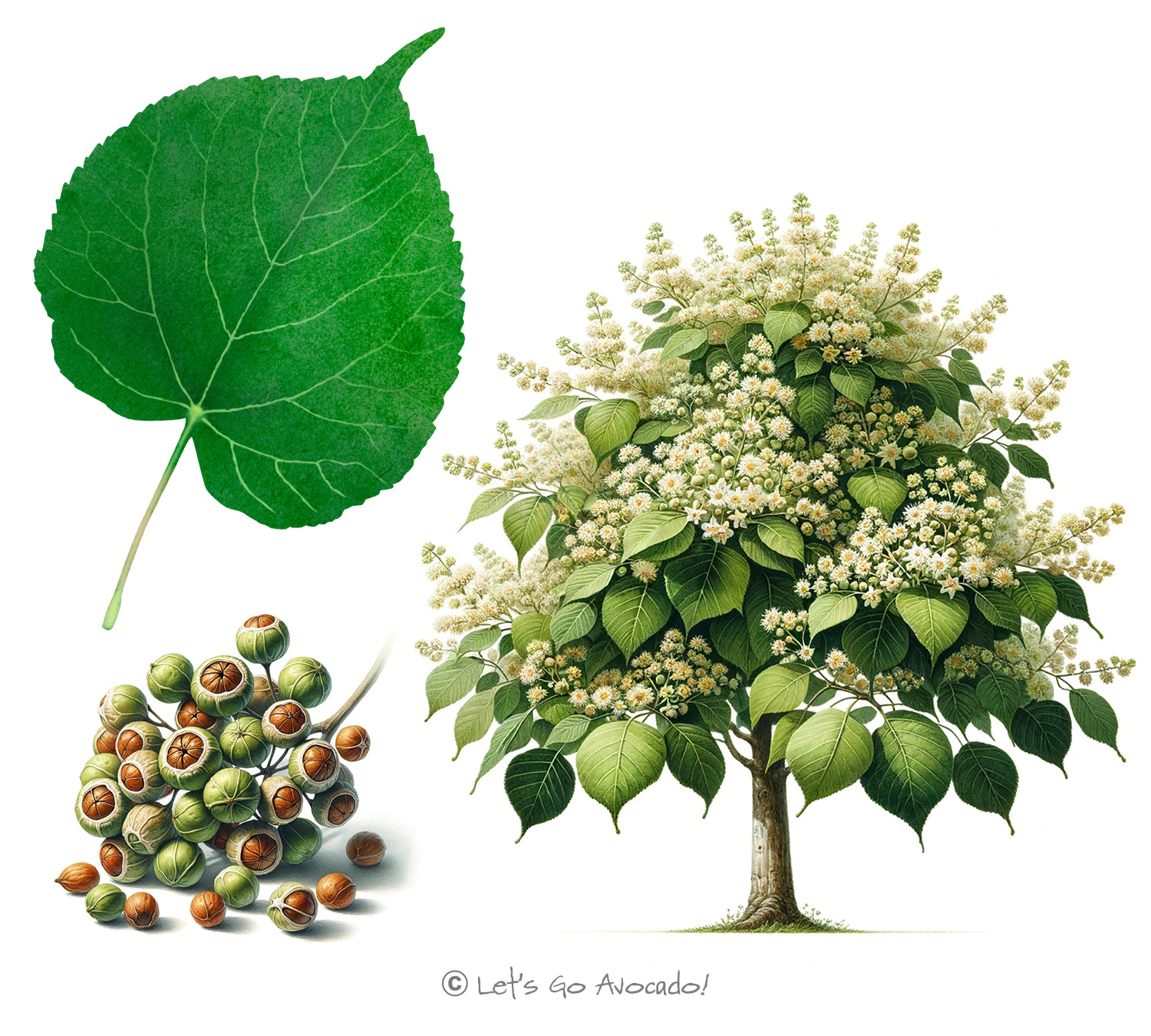Unveiling the American Lime Tree: A Natural Wonder
Attention, young explorers! Today’s expedition leads us into the captivating world of the American Lime tree, also known as the Basswood or Tilia americana. This tree isn’t just a pillar in the forest; it’s a vibrant ecosystem in itself, playing a crucial role in its environment. Native to the eastern parts of North America, the American Lime tree is a symbol of strength and versatility. With its heart-shaped leaves and fragrant flowers, it stands as a gentle giant in the woods. Let’s journey through the life and times of this amazing tree and discover why it’s so essential to our natural world.
Identity and Appearance: The Unique Traits of the American Lime
One glance at the American Lime tree, and you’ll notice its large, heart-shaped leaves, which bring a unique texture to the forest canopy. In the blooming season, clusters of small, creamy-white flowers emerge, exuding a delightful fragrance that fills the air. This tree’s bark, with its light gray and smooth texture, becomes more furrowed and textured as it ages, adding to its character.
Stature in the Forest: A Towering Presence
When it comes to size, the American Lime tree is a true giant. It can reach towering heights of 60-80 feet (18-24 meters), with some even stretching up to 130 feet (40 meters) in ideal conditions. Its impressive stature and broad, rounded crown make it a dominant figure in the forest landscape, providing ample shade and habitat.
Cycle of Life: Growth and Reproduction
The lifecycle of the American Lime is a testament to nature’s wonders. Its fragrant flowers are not just a treat for the senses but also a hub of activity for pollinators like bees. The tree produces small, nut-like fruits that become a food source for wildlife. Preferring rich, moist soils, this tree can be found along streams and in well-drained woodlands, contributing to the biodiversityBiodiversity refers to the variety of living things in an ecosystem. The more biodiversity there is in an ecosystem, the healthier and stronger it is. and health of its ecosystem.
Ecological Impact: A Keystone Species
In its natural habitat, the American Lime plays a pivotal role. Its dense foliage offers a haven for various bird species, while its flowers are a critical nectar source for bees and butterflies. The tree also plays a role in soil stabilization and water regulation, making it an integral part of its ecosystem.
Challenges and Resilience: Adapting to Change
Like all living beings, the American Lime faces its share of challenges, from environmental changes to pests and diseases. However, its ability to adapt and thrive in various conditions speaks to its resilience and hardiness as a species.
Human Connection: More Than Just Wood
Humans have long valued the American Lime for its soft, workable wood, used in carving and furniture making. Its inner bark, known as bast, has been used for cordage and mats. The tree’s flowers are also used in herbal teas and remedies, showcasing its versatility beyond just a timber source.
The American Lime tree, with its serene presence and ecological importance, is more than just a tree. It’s a living legacy in our forests, a provider of life and beauty. As you wander through the woods and come across this magnificent tree, take a moment to appreciate its role in our world.
Keep exploring, and you’ll uncover the endless wonders that nature holds!










